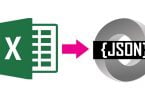Download free Excel Macro : Auto Update Pivot Table Range
Macros are one of the most powerful features in Excel. They are small programs that can automate tasks and save you a lot of time.
If you are not familiar with macros, they can seem a bit daunting. But once you learn how to use them, you will wonder how you ever managed without them!
In this article, we will show you how to use the Macro "Auto Update Pivot Table Range" in Excel. We will also provide some examples of how macros can be used to automate tasks.
How to use Macros in Excel?
Macros are written in a programming language called Visual Basic for Applications (VBA). VBA is a simple language that is easy to learn.
You do not need to be a programmer to use macros. However, if you are familiar with programming, you can use VBA to create more complex macros.
There are two ways to use macros in Excel:
1. Use a macro that is already written.
2. Write your own macro.
For both methods check out those articles to know how to use macros in Excel:
https://www.macrosinexcel.com/introduction-to-macros-in-excel/
https://www.macrosinexcel.com/create-write-macros-in-excel/
https://www.macrosinexcel.com/macros-in-excel-with-examples/
To create a macro in Excel, open the Visual Basic Editor (VBE) by pressing Alt+F11 on your keyboard.
In the VBE, select Insert > Module. This will insert a new blank module into the VBE.
In the new module, paste the code below.
For example, the following code will create a macro that will Auto Update Pivot Table Range:

Sub UpdatePivotTableRange()
Dim Data_Sheet As Worksheet
Dim Pivot_Sheet As Worksheet
Dim StartPoint As Range
Dim DataRange As Range
Dim PivotName As String
Dim NewRange As String
Dim LastCol As Long
Dim lastRow As Long
'Set Pivot Table & Source Worksheet
Set Data_Sheet = ThisWorkbook.Worksheets("PivotTableData3")
Set Pivot_Sheet = ThisWorkbook.Worksheets("Pivot3")
'Enter in Pivot Table Name
PivotName = "PivotTable2"
'Defining Staring Point & Dynamic Range
Data_Sheet.Activate
Set StartPoint = Data_Sheet.Range("A1")
LastCol = StartPoint.End(xlToRight).Column
DownCell = StartPoint.End(xlDown).Row
Set DataRange = Data_Sheet.Range(StartPoint, Cells(DownCell, LastCol))
NewRange = Data_Sheet.Name & "!" & DataRange.Address(ReferenceStyle:=xlR1C1)
'Change Pivot Table Data Source Range Address
Pivot_Sheet.PivotTables(PivotName). _
ChangePivotCache ActiveWorkbook. _
PivotCaches.Create(SourceType:=xlDatabase, SourceData:=NewRange)
'Ensure Pivot Table is Refreshed
Pivot_Sheet.PivotTables(PivotName).RefreshTable
'Complete Message
Pivot_Sheet.Activate
MsgBox "Your Pivot Table is now updated."
End Sub

To run the macro, press the Run button in the toolbar (or press F5 on your keyboard).
About Auto Update Pivot Table Range Excel Macro
If you've ever used a Pivot Table in Excel, then you know how frustrating it can be when the data changes and the Pivot Table doesn't update automatically. Well, there's good news! There's now an Excel macro that will do just that - update your Pivot Table automatically when the data changes. To use the Auto Update Pivot Table Range macro, simply download it from the link below and open it in Excel. Then, enter the data that you want to use in your Pivot Table into the macro. Once the data is entered, the macro will automatically create the Pivot Table for you. One thing to keep in mind is that the Auto Update Pivot Table Range macro will only work






